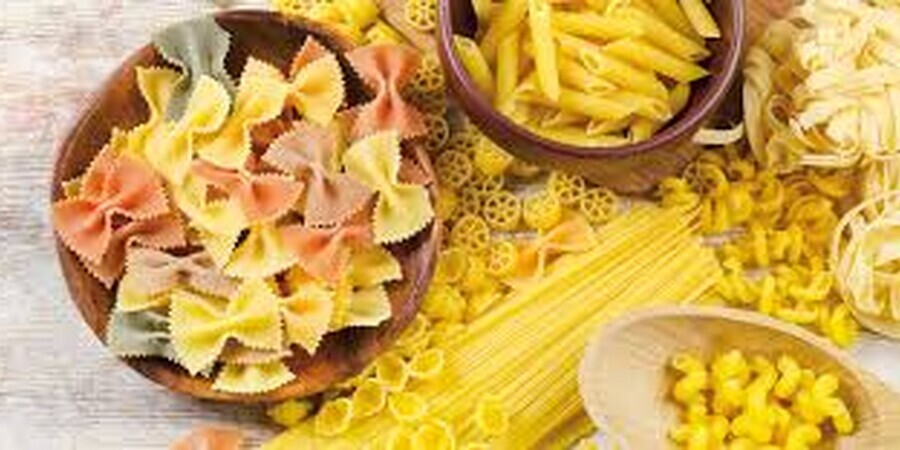While you clearly don’t have to be limited to only using the prescribed pasta shape with that sauce you’re cooking; you might want to broaden your pasta horizons a bit from the shapes you’re already familiar with. Here’s a little Italian pasta primer to help you learn about some of the more than 350 different kinds of Italian pasta out there. Check your local market to see how many are available where you live!
Italian Pasta - Pasta is a staple food of traditional Italian cuisine, with the first reference dating to 1154 in Sicily. It is also commonly used to refer to the variety of pasta dishes.
TIP: Make sure you’re eating the pasta which has been freshly made on the premises and explores all the shapes and sizes of pasta as well as the traditional sauces – you’ll discover the many forms the humble pasta can take and the individual flavored sauces depending on what part of Italy you’re in.
Types of Pasta
- Agnolotti (Ahn-yo-LOH-tee) is a stuffed pasta that’s typically a half-circular or circular shape and stuffed with meat.
- Bigoli (bee-GOH-lee) – This is whole wheat or buckwheat pasta that’s essentially like thick spaghetti and found mainly in the Veneto region.
- Bucatini (boo-Kah-TEE-nee) – This is also basically exactly like spaghetti in shape, except that it’s hollow in the middle. The name means “little hole.”
- Cannelloni (Kahn-nel-LOH-nee) – These are large tubes that can be hand- or machine-made and be smooth or ridged, and are usually filled with meat before being covered in a meat sauce and then baked.
- Cavatappi (kah-vah-TAHP-pee) – This name means “corkscrews,” and it’s perfectly indicative of the shape. They’re hollow like maccheroni, but twisted.
- Cavatelli (kah-vah-TEL-lee) – These are short pieces of pasta with a rolled edge, so that they look like they’re small, hollow tubes.
- Conchiglie (kohn-KEE-lee-eh) – This will be a familiar shape to most people, even if the name is hard to pronounce. This is that seashell-shaped dried pasta.
- Farfalle (far-FAHL-leh) – This is another familiar shape; it’s the bow-tie dried pasta, and the word actually means “butterflies.”
- Fusilli (foo-SEEL-lee) – These are similar to the cavatappi in that they’re shaped like corkscrews, but they’re flat pieces of pasta that have been twisted instead of round pieces. The word means “little spindles.
- Gemelli (jeh-MEHL-lee) – The word “gemelli” means “twins,” and this pasta looks like two short pieces of pasta twisted together. It’s actually one piece of pasta, but it looks like twins!
- Gnocchi (NYO-kee) – These are thumb-sized pieces of thick pasta, usually made from potatoes, that actually probably come from the Middle East.
- Lumaconi (loo-mah-KOH-nee) – This word means “big snails,” and this pasta sort of resembles a snail shell. It’s basically a hollow tube that’s been folded in half.
- Orecchiette (or-eh-KYEH-teh) – These are small bowl-shaped pastas (as if you pressed your thumb into a circular piece of pasta), and the word means “little ears.”
- Pappardelle (pahp-par-DEL-leh) – This pasta is a big flat ribbon of pasta; it’s not as wide as a lasagne noodle, but significantly wider than fettuccine.
- Pici (PEE-chee) – This is a specialty in Tuscany, and it’s like thick spaghetti, only it’s hand-rolled and therefore irregular in shape.
- Radiatore (rah-dee-ah-TOR-eh) – This word means, as you might have guessed, “radiator,” and this pasta is shaped like little mini radiators.
- Rigatoni (ree-gah-TOH-nee) – This is a small tube-shaped pasta with a larger opening than penne and straight-cut ends. The name is based in the Italian word for “ridged.”
- Stringozzi (streen-GOHTS-zee) – This looks much like a thick version of spaghetti, and the name even refers to the Italian word for “shoe laces.”
- Strozzapreti (strots-zah-PREH-tee) – This might be one of the more colorfully named pastas in Italy because the name means “priest chokers!” The pasta itself is similar to cavatelli in that it’s a flat piece of pasta that’s been hand-rolled on the edges to create something of a hollow tube.
- Tortellini (tor-tell-LEE-nee) – This is a small stuffed pasta that’s shaped almost like a half-moon, with the stuffing at one side and the pointy edges of the pasta connected at the other. They’re usually stuffed with cheese or meat. (Tortelloni is just big versions of tortellini.)
- Trofie (TROH-fee-eh) – This pasta shape is similar to strozzapreti, although rather than just a rolled edge, it’s actually twisted in the rolling, so the ends are pointy.
- Vermicelli (vehr-mee-CHEL-lee) – This is a long pasta like spaghetti, only a bit thinner, and the name means “little worms.”
Share This Article on Social Media


